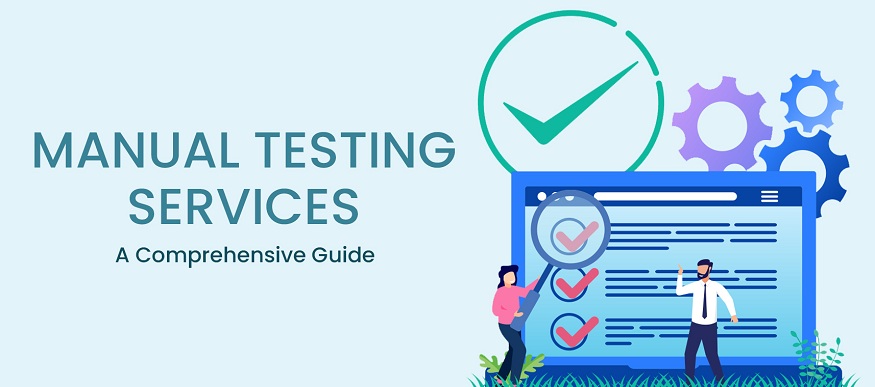In the fast-paced world of software development, the role of manual testing has undergone significant transformations over the years. With the advent of automated testing tools and agile methodologies, some have predicted the demise of manual testing. However, manual testing services remain a crucial component of the software development process, adapting and evolving to meet the changing demands of the industry.
In this article, we will discuss the evolving role of manual testing in the software development industry and explore its potential future trends.
The Foundation of Manual Testing
Manual testing has been an integral part of software development since its inception. Traditionally, manual testers were responsible for executing test cases, identifying defects, and ensuring the software met the specified requirements. While this role remains fundamentally the same, its context and methodologies have evolved significantly.
Evolving Role in Agile Development
The rise of Agile methodologies has reshaped the role of manual testing. In Agile, software is developed incrementally, with frequent iterations and continuous feedback. This dynamic environment demands that manual testers collaborate closely with developers, product owners, and other stakeholders to ensure that quality is maintained throughout the development process.
Manual testers are no longer siloed in a separate testing phase at the end of the development cycle. Instead, they actively participate in sprint planning, daily stand-up meetings, and retrospective sessions. This close collaboration enables quicker defect identification and resolution, leading to faster development cycles and improved software quality.
Exploratory Testing and User Experience
One of the areas where manual testing excels is in exploratory testing. This approach involves testers actively exploring the software, trying different inputs, and thinking critically about how users might interact with it. Exploratory testing helps uncover unexpected defects and usability issues that automated tests might miss.
Manual testers also play a crucial role in evaluating the user experience (UX). They assess the software from a user’s perspective, identifying user interface issues, usability problems, and other aspects that can significantly impact user satisfaction. In an era where user-centric design is paramount, manual testing service remains indispensable.
Adapting to New Technologies
As software development embraces new technologies like AI, machine learning, and IoT, manual testers need to adapt and acquire new skills. For example, testing AI-driven applications requires a deep understanding of how machine learning models work and how to test their performance effectively.
Moreover, manual testers must also consider the proliferation of devices and platforms. Mobile apps, web applications, and desktop software must function seamlessly across a wide range of devices, screen sizes, and operating systems. Manual testing ensures that the software is compatible with the diverse technology landscape.
Challenges and Pitfalls
While manual testing continues to evolve, it faces some challenges and pitfalls. One of the primary concerns is the potential for human error. Testers may overlook critical defects or fail to execute test cases consistently. To mitigate this, manual testers increasingly rely on test management tools that help organize test cases, track results, and reduce the chances of human error.
Additionally, manual functional testing services can be time-consuming and costly, especially for large and complex software projects. This has led to increased automation of repetitive and regression testing tasks, freeing up manual testers to focus on more creative and exploratory testing efforts.
Future Trends in Manual Testing
As we look to the future, several trends are likely to shape the role of manual testing in the software development industry:
- AI-Augmented Testing: AI and machine learning will play a more significant role in manual testing. Testers will use AI-powered tools to assist in test case design, defect identification, and test data generation.
- Shift-Left Testing: Manual testing will continue to move upstream in the development process, with testers involved from the very beginning. This ensures that quality is built into the software from the start.
- Continuous Learning: Testers will need to continually update their skills to keep pace with evolving technologies. This includes understanding new programming languages, testing tools, and emerging trends in the industry.
- Test Automation Synergy: Manual testers will work closely with automation engineers to create a synergy between manual and automated testing efforts. Automation will handle repetitive tasks, while manual testing focuses on critical thinking and exploratory testing.
- User-Centric Testing: The emphasis on user experience will intensify, with manual testers taking on the role of user advocates. Usability testing and feedback collection will become standard practice.
Conclusion
Manual testing has come a long way from its traditional role as the last line of defense in software quality assurance. It has evolved to become an integral part of Agile development, a champion of user experience, and a crucial component in the ever-changing landscape of software testing. As the industry continues to advance, manual testing will adapt, incorporating new technologies and methodologies to ensure that software remains reliable, user-friendly, and of the highest quality. Its future is bright, and its relevance is unquestionable in the software development industry.

